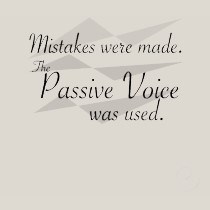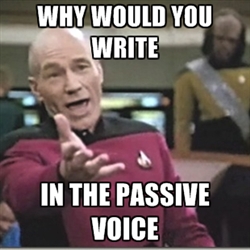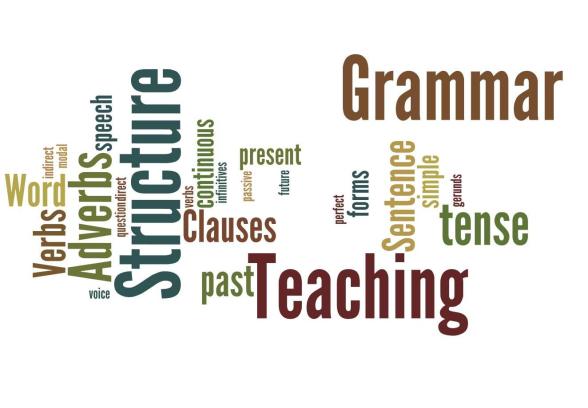I often equate the battle between passive and active voice as a sweet balance in “The Force”; in creative writing, passive voice becomes the author’s sylistic choice, but in Academic or professional writing, active voice is the standard. Since this blog is mostly about what is acceptable for academia/professional discourse I’m going to say this as though it is the only acceptable thing to do: Do not use Passive Voice in your writing. Why? Well, it’s actually quite simple: it’s passive. The definition of passive is one that I’m certain we are all aware of, so I won’t waste your time, or mine, in defining it. Passive voice allows for something to happen to someone/thing, whereas Active voice has someone doing something.
Example: Passive Voice– “The paper airplane was thrown.” This little sentence leaves the reader wondering who or what threw the paper airplane. If you can follow up the statement with “…by zombies.”, thereby completely ruining your professional credibility, you have written in Passive voice.
I define Passive voice as, any sentence in which an object is acted upon by an unknown subject, thereby giving the illusion that the object is in fact the subject of the sentence. The object in the above sentence is the paper airplane, and the subject is unknown. The subject of a sentence is always the noun/pronoun which performs the action, and the object is always the noun/pronoun that is acted upon. It is easy to replace passive voice with active voice; all the writer has to do is insert a subject.
Example: Active Voice– “The little boy threw the paper airplane.”
It may not seem like a very pressing issue in a simple sentence as above, but when you are trying to convince your employer, client, or professor that you are an expert in regards to your chosen topic, using active voice becomes the difference between landing the client and missing out on a multi-million dollar opportunity. So, next time you are looking through your proposal, or your next paper just remember that if you can add “…by zombies.” to the end of any sentence, you have used passive voice. Replacing passive voice with active voice will make your argument come across as stronger, and it will help you come across as very eolquent.
Good luck, and remember: Active Voice is your friend!






